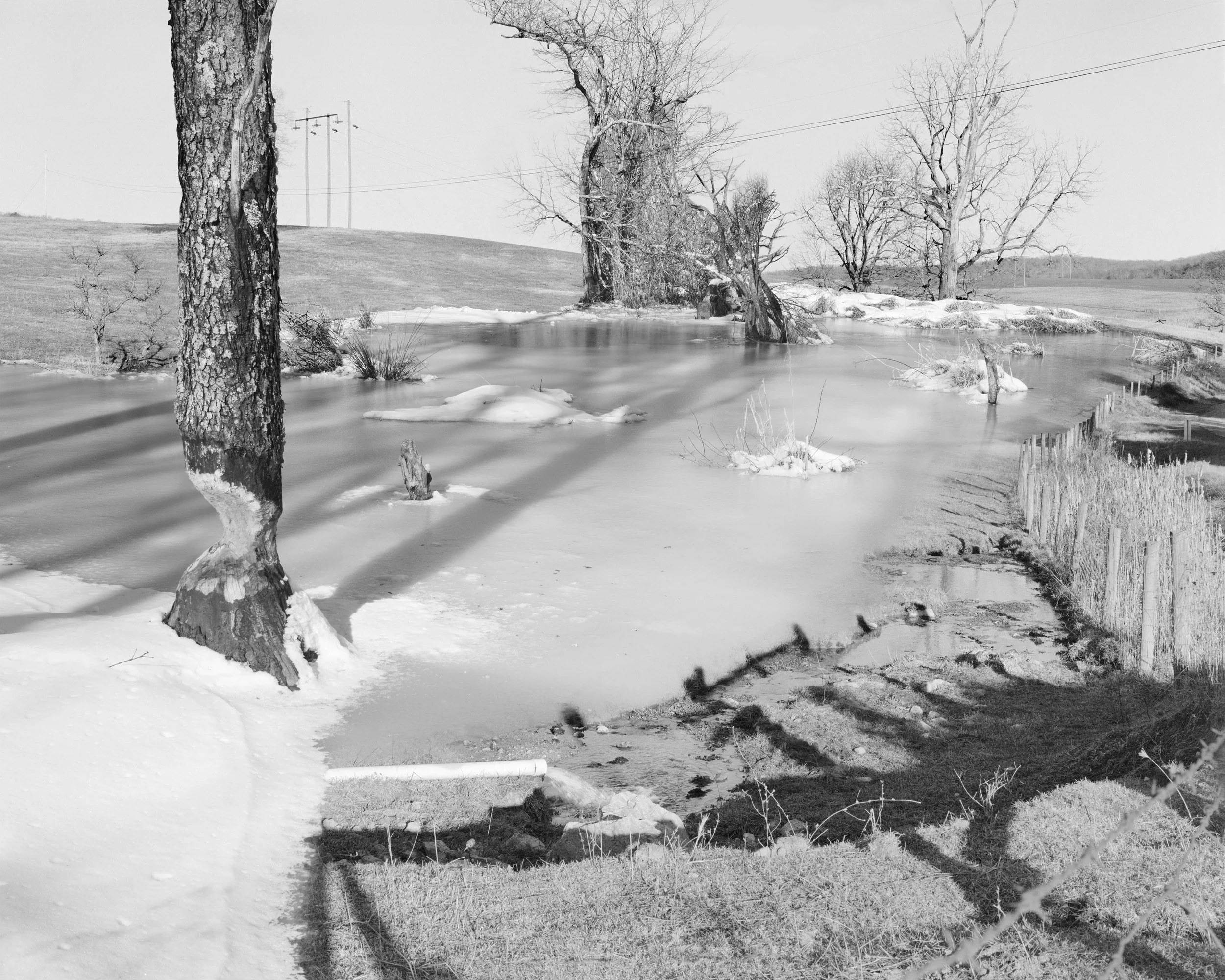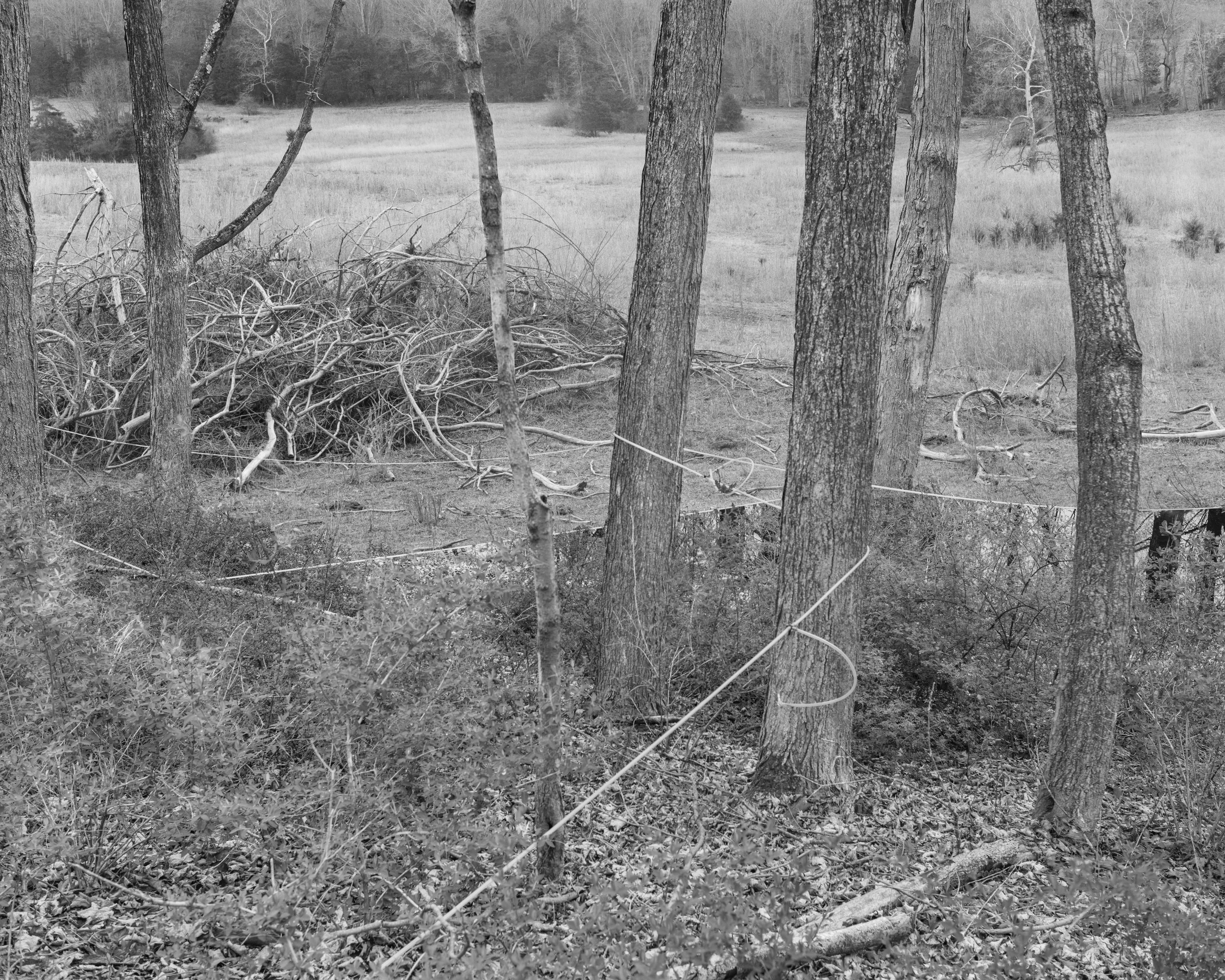When I enter a landscape, where shallow ponds meet sloping pastures or kudzu vines swallow twisted ravines, I am absorbed into the relationships between these elements. My eyes trail the shadows cast by a tree, gnawed by a beaver, over a frozen pond and into an abyss of tangled bushes that writhe in a crowd of dark branches and hold my gaze in the distance. Landscapes marked by human incursion posess a similar allure; I forget myself, and focus instead on the extraordinary oddness of how a massive powerline, snaking through the faraway forest, is dwarfed by the stature of a spindly trunk. I am attracted to the coupling of empty lawn chairs and a gigantic puddle, invading someone’s manicured backyard and forcing them to build a footbridge to cross the water. My series of five photographs communicates the immersive qualities of landscapes, how I am provoked into connecting layers of space within a single place.
All five of my photographs are the product of combining two separate images, either shot with a 4 by 5 view camera or a DSLR, using meticulous masking techniques in Photoshop. Pairings begin with my initial instinct that certain compositional elements, natural and manmade, might align to create a beautifully complicated, yet sensical, place. I experiment with opacity adjustments, erasers, and history brushes to decide which aspects accumulate into one place. By erasing my top photograph along hard edges, such as power lines and tree trunks, I can make seamless transitions between it and the second layer. Curve adjustments to specific portions of each image decrease the variation in their tonal values, uniting the landscapes and making their details equally important. These techniques allow components of each image to ebb and flow into a single landscape filled with curious relationships, of questionable authenticity, between human and nature.
Frederick Church, an 18th century painter based in the Hudson Valley, manufactured landscapes based on his perception of what the “essence” of a place was. In a rendering of the Andes, for instance, he paints a foreground of local flowers and silver trees, found on separate explorations, and places them against a background of mountains, observed on another occasion. These fabricated combinations of flora and fauna offer accessibility to the landscape; viewers’ eyes are encouraged to travel between intricate components, packed into one frame. Church’s work, however, is argued to be an idealized view of place which intensifies reality, making it appear grander and more divine than its true form. By creating amalgamations of space and selling them as depictions of reality, it feels to me as though Church has conquered nature. By conceptualizing it with the exclusive intent of creating a breathtaking place, he claims the landscape.
In the same spirit as Church, humans need more than visual presense in a place. Upon seeing untouched landscapes, we remake them as physically accessible by installing lines: fence lines, power lines, maple-tapping lines. Standing in a grove of maples, my eyes chase white tubes, bound to the trunks of maples, as they cut through overgrowth in a strange coupling of human and nature. Lines may grant my body and vision with access to a place, but they are also a reminder of its inauthenticity. I am both disturbed and enthralled by the reality of our infringement on nature, and my work exists somewhere between these feelings. The new places I’ve created are just the places that I see when I am within nature. Instead of claiming the landscape, I let the landscape claim me.









